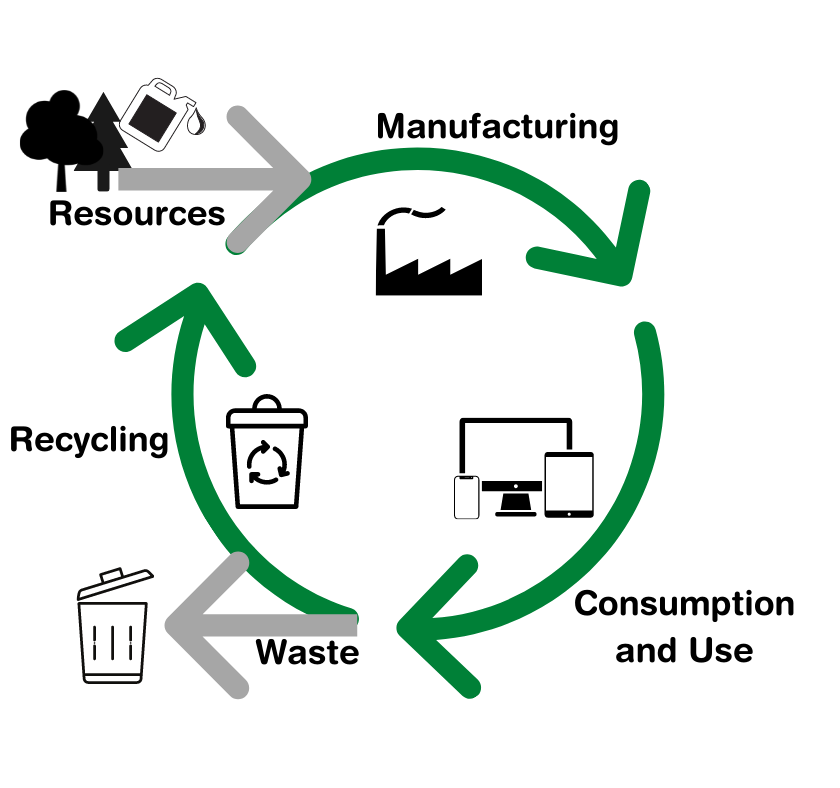What is the Circular Economy?
In our current way of producing and selling goods or ‘stuff’, otherwise known as our economy, we use Earth’s natural materials, produce goods, and eventually throw them away as waste.
This process is linear, and one directional. A circular economy is an alternative to a linear economy, where we can keep using our goods and resources within our system to stop producing waste in the first place.
We need to reduce, reuse and recycle rather than waste.
How can we improve the Circular Economy using nature?
Nature has been recycling waste since the Earth began. Plants use the renewable energy from sunlight to make leaves, flowers and fruit that become food for animals, while dead animals are recycled into nutrients that plants use to grow. This is a circular process.
Since humans learnt how to extract resources from rocks we have been using our planet’s resources unsustainably, by using them up without putting them back into the natural systems. We need to learn to reuse resources rather than using them up, we need a circular economy.
Examples of the circular economy in Devon
Some good examples of the circular economy in action in Devon include reuse shops at Household Waste Recycling Centres where reusable goods are set aside/salvaged for re-use at all in most sites in Devon.
Devon also has 11 community run “Repair Cafes” which help people repair a range of items from hairdryers to bikes to jewellery repairs.
To find out about more reuse projects in Devon such as upcycling, clothe swaps, scrap stores, donating goods and much more visit the reuse page on the Recycle Devon website.
Teaching Resources and Circular Economy Quiz
There are loads of amazing resources available from The Ellen Macarthur Institute to help understand and teach about the circular economy and those on our Circular Economy Resource Box page.
Take a look at the amazing collection of Finnish resources designed for teaching about the circular economy from Sitra.
We also have a resource box developed exclusively to help Devon teachers of Design and Technology GCSE teach about the Circular Economy in Devon. Read more on our D&T Resource Box pages.

